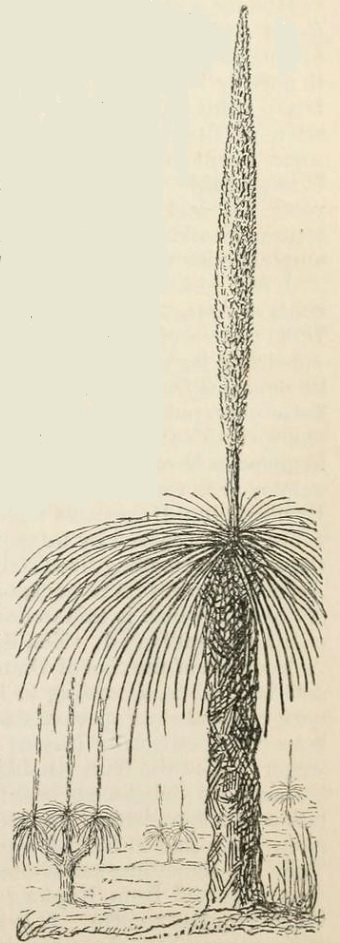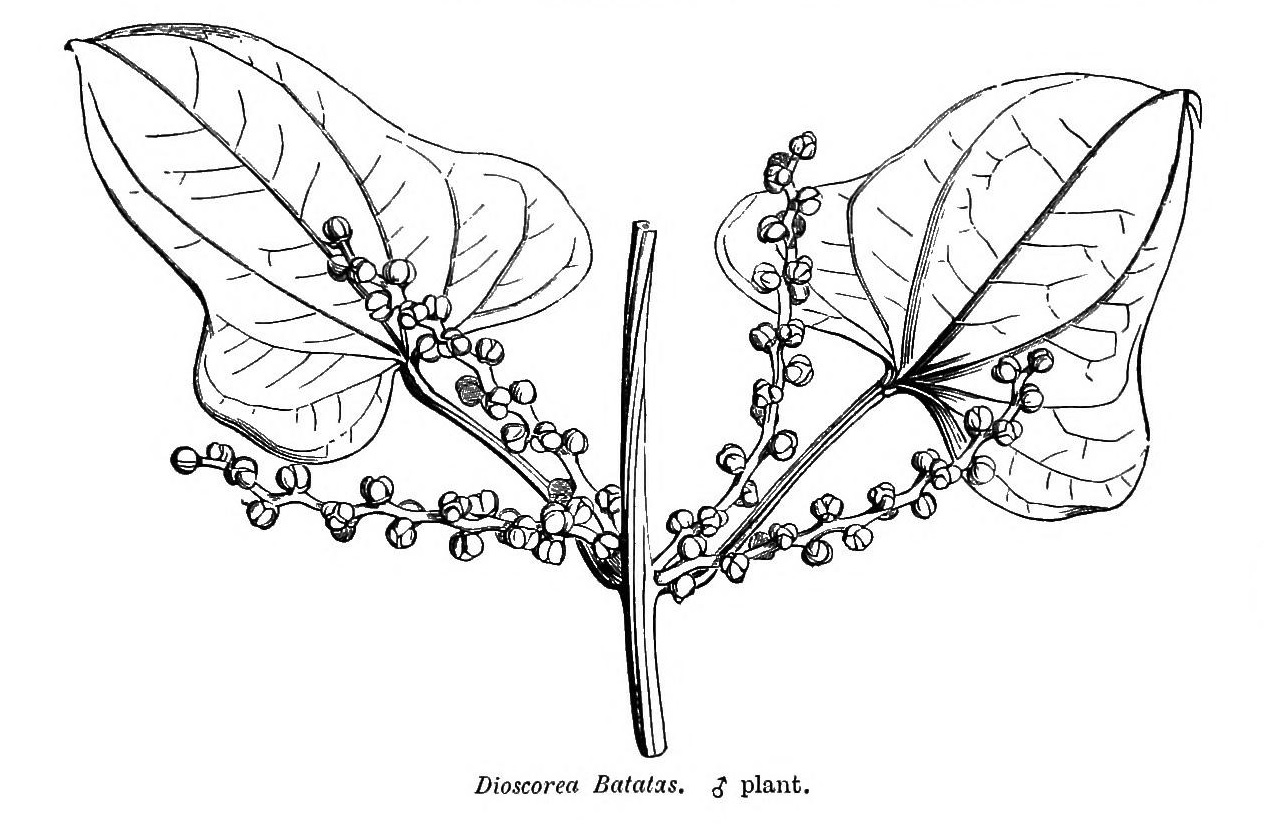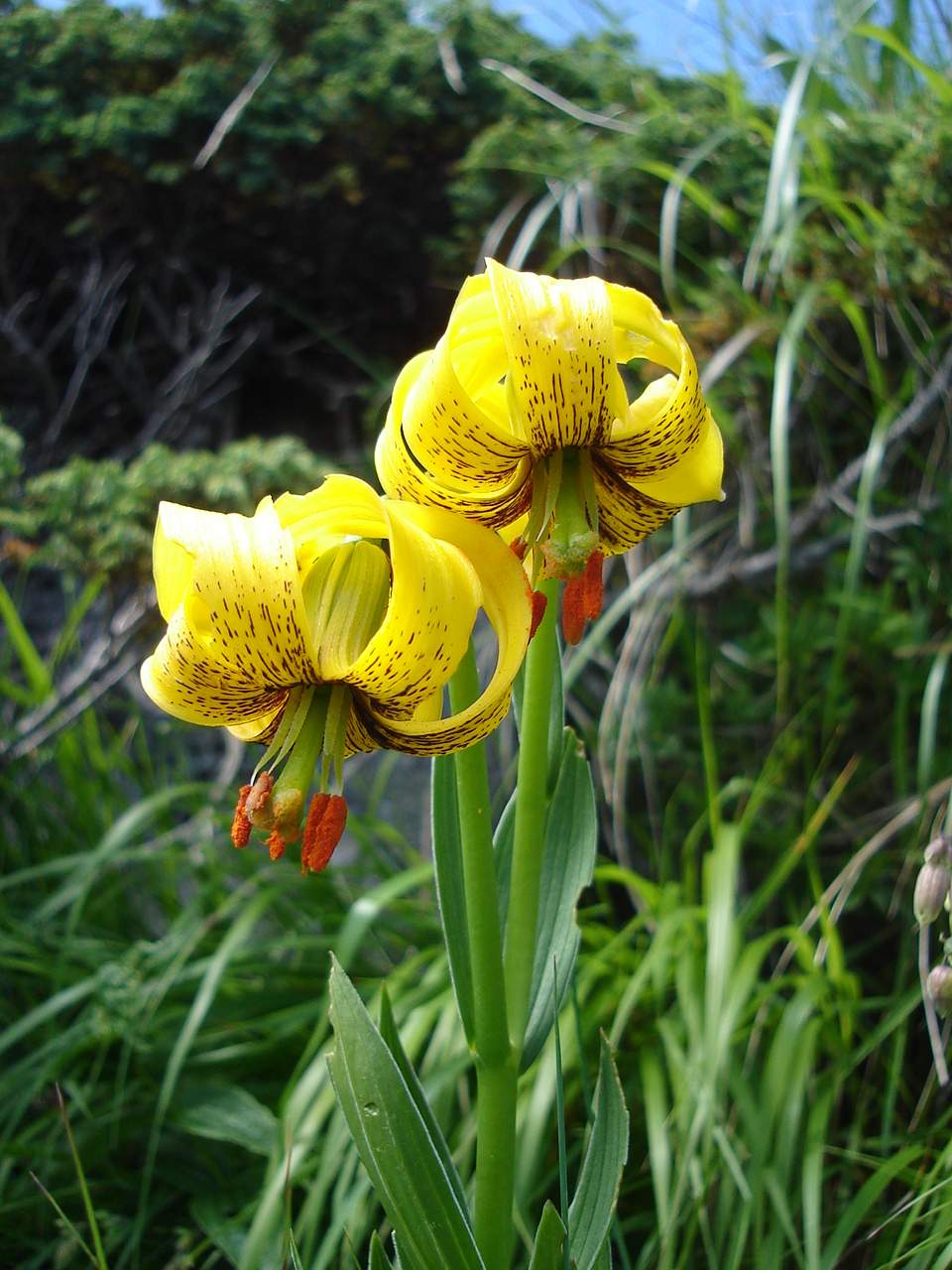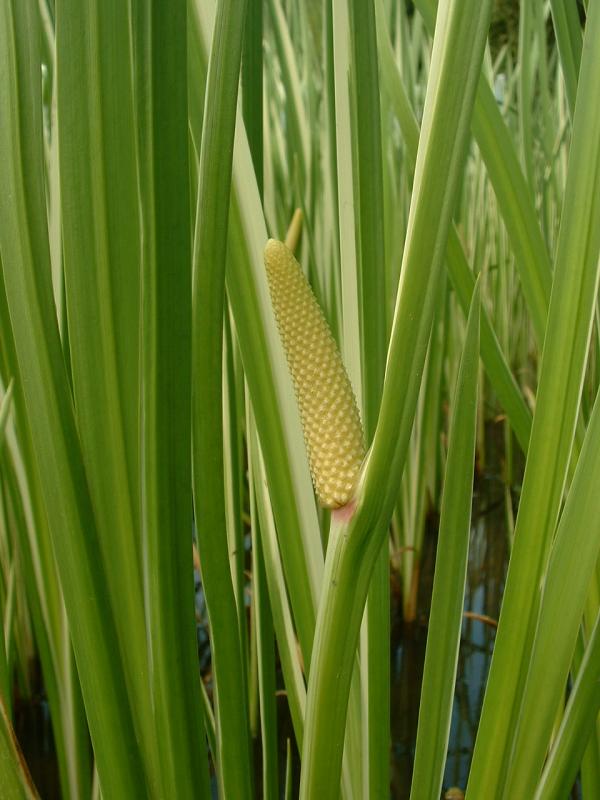|
Monocotyledon
Monocotyledons (), commonly referred to as monocots, ( Lilianae '' sensu'' Chase & Reveal) are flowering plants whose seeds contain only one embryonic leaf, or cotyledon. A monocot taxon has been in use for several decades, but with various ranks and under several different names. The APG IV system recognises its monophyly but does not assign it to a taxonomic rank, and instead uses the term "monocots" to refer to the group. Monocotyledons are contrasted with the dicotyledons, which have two cotyledons. Unlike the monocots however, the dicots are not monophyletic and the two cotyledons are instead the ancestral characteristic of all flowering plants. Botanists now classify dicots into the eudicots ("true dicots") and several basal lineages from which the monocots emerged. The monocots are extremely important economically, culturally, and ecologically, and make up a majority of plant biomass used in agriculture. Common crops such as dates, onions, garlic, rice, wheat, maize, ... [...More Info...] [...Related Items...] OR: [Wikipedia] [Google] [Baidu] |
Asparagales
Asparagales (asparagoid lilies) are a diverse order of flowering plants in the monocots. Under the APG IV system of flowering plant classification, Asparagales are the largest order of monocots with 14 families, 1,122 genera, and about 36,000 species, with members as varied as asparagus, orchids, yuccas, irises, onions, garlic, leeks, and other Alliums, daffodils, snowdrops, amaryllis, agaves, butcher's broom, Agapanthus, Solomon's seal, hyacinths, bluebells, spider plants, grasstrees, aloe, freesias, gladioli, crocuses, and saffron. Most species of Asparagales are herbaceous perennials, although some are climbers and some are trees or shrubs. The order also contains many geophytes (bulbs, corms, and various kinds of tuber). The leaves of almost all species form a tight rosette, either at the base of the plant or at the end of the stem, but occasionally along the stem. The flowers are not particularly distinctive, being 'lily type', with six tepals and ... [...More Info...] [...Related Items...] OR: [Wikipedia] [Google] [Baidu] |
Lilianae
Lilianae (also known as Liliiflorae) is a botanical name for a superorder (that is, a rank higher than that of order) of flowering plants. Such a superorder of necessity includes the type family Liliaceae (and usually the type order Liliales). Terminations at the rank of superorder are not standardized by the International Code of Nomenclature for algae, fungi, and plants (ICN), although the suffix ''-anae'' has been proposed. Lilianae, introduced in 1966 as a name for a superorder, progressively replaced the older term Liliiflorae, introduced in 1825 as a name for an order. Taxonomy History Early history - Liliiflorae Liliiflorae was a term introduced by Carl Adolph Agardh in 1825 as a higher order to include the Liliaceae (which he called Coronariae) and related families. Argadh, together with De Candolle developed the concept of ordered botanical ranks, in this case grouping together De Jussieu's (1789) recently defined collections of genera (families) into higher ... [...More Info...] [...Related Items...] OR: [Wikipedia] [Google] [Baidu] |
Lilioid Monocots
Lilioid monocots (lilioids, liliid monocots, petaloid monocots, petaloid lilioid monocots) is an informal name used for a grade (biology), grade (grouping of taxa with common characteristics) of five monocot order (biology), orders (Petrosaviales, Dioscoreales, Pandanales, Liliales and Asparagales) in which the majority of species have flowers with relatively large, coloured tepals. This characteristic is similar to that found in Lilium, lilies ("lily-like"). Petaloid monocots refers to the flowers having tepals which all resemble petals (petaloid). The taxonomic terms Lilianae or Liliiflorae have also been applied to this assemblage at various times. From the early nineteenth century many of the species in this group of plants were put into a very broadly defined family, Liliaceae ''sensu lato'' or ''s.l.'' (lily family). These classification systems are still found in many books and other sources. Within the monocots the Liliaceae ''s.l.'' were distinguished from the Glumaceae. ... [...More Info...] [...Related Items...] OR: [Wikipedia] [Google] [Baidu] |
Zingiberales
The Zingiberales are flowering plants forming one of four orders in the commelinids clade of monocots, together with its sister order, Commelinales. The order includes 68 genera and 2,600 species. Zingiberales are a unique though morphologically diverse order that has been widely recognised as such over a long period of time. They are usually large herbaceous plants with rhizomatous root systems and lacking an aerial stem except when flowering. Flowers are usually large and showy, and the stamens are often modified ( staminodes) to also form colourful petal-like structures that attract pollinators. Zingiberales contain eight families that are informally considered as two groups, differing in the number of fertile stamens. A " banana group" of four families appeared first and were named on the basis of large banana-like leaves. Later, a more genetically coherent (monophyletic) "ginger group" appeared, consisting of the remaining four families. The order, which has a fossil ... [...More Info...] [...Related Items...] OR: [Wikipedia] [Google] [Baidu] |
Liliales
Liliales is an order (biology), order of monocotyledonous flowering plants in the Angiosperm Phylogeny Group and Angiosperm Phylogeny Web List of systems of plant classification, system, within the lilioid monocots. This order of necessity includes the family (biology), family Liliaceae. The APG III system (2009) places this order in the monocot clade. In APG III, the family Luzuriagaceae is combined with the family Alstroemeriaceae and the family Petermanniaceae is recognized. Both the order Lililiales and the family Liliaceae have had a widely disputed history, with the circumscription (taxonomy), circumscription varying greatly from one taxonomist to another. Previous members of this order, which at one stage included most monocots with conspicuous tepals and lacking starch in the endosperm are now distributed over three orders, Liliales, Dioscoreales and Asparagales, using predominantly molecular phylogenetics. The newly delimited Liliales is monophyletic, with ten families. W ... [...More Info...] [...Related Items...] OR: [Wikipedia] [Google] [Baidu] |
Dioscoreales
The Dioscoreales are an order of monocotyledonous flowering plants, organized under modern classification systems, such as the Angiosperm Phylogeny Group or the Angiosperm Phylogeny Web. Among monocot plants, Dioscoreales are grouped with the lilioid monocots, wherein they are a sister group to the Pandanales. In total, the order Dioscoreales comprises three families, 22 genera and about 850 species. Dioscoreales contains the family Dioscoreaceae, which notably includes the yams ('' Dioscorea'') and several other bulbous and tuberous plants, some of which are heavily cultivated as staple food sources in certain countries. Certain species are found solely in arid climates (incl. parts of Southern Africa), and have adapted to this harsh environment as caudex-forming, perennial caudiciformes, including '' Dioscorea elephantipes'', the "elephant's foot" or "elephant-foot yam". Older systems tended to place all lilioid monocots with reticulate veined leaves (such as Smilacac ... [...More Info...] [...Related Items...] OR: [Wikipedia] [Google] [Baidu] |
Liliopsida
Liliopsida Batsch (synonym: Liliatae) is a botanical name for the class containing the family Liliaceae (or Lily Family). It is considered synonymous (or nearly synonymous) with the name monocotyledon. Publication of the name is credited to Scopoli (in 1760): see author citation (botany). This name is formed by replacing the termination ''-aceae'' in the name Liliaceae by the termination ''-opsida'' (Art 16 of the ICBN). Although in principle it is true that circumscription of this class will vary with the taxonomic system being used, in practice this name is very strongly linked to the Cronquist system, and the allied Takhtajan system. These two are the only major systems to use the name, and in both these systems it refers to the group more widely known as the monocotyledons. Earlier systems referred to this group by the name Monocotyledones, with Monocotyledoneae an earlier spelling (these names may be used in any rank). Systems such as the Dahlgren and Thorne systems (more ... [...More Info...] [...Related Items...] OR: [Wikipedia] [Google] [Baidu] |
Commelinid
In plant taxonomy, commelinids (originally commelinoids) is a clade of flowering plants within the monocots, distinguished by having cell walls containing ferulic acid. Well-known commelinids include palms and relatives (order Arecales), dayflowers, spiderworts, kangaroo paws, and water hyacinth (order Commelinales), grasses, bromeliads, rushes, and sedges (order Poales), ginger, cardamom, turmeric, galangal, bananas, plantains, and bird of paradise flower (order Zingiberales). The commelinids are the only clade that the APG IV system has informally named within the monocots. The remaining monocots are a paraphyletic unit. Also known as the commelinid monocots it forms one of three groupings within the monocots, and the final branch; the other two groups are the alismatid monocots and the lilioid monocots. Description Members of the commelinid clade have cell walls containing UV- fluorescent ferulic acid. Taxonomy and Phylogeny The commelinids constitute a ... [...More Info...] [...Related Items...] OR: [Wikipedia] [Google] [Baidu] |
Acorales
''Acorus'' is a genus of monocot flowering plants. This genus was once placed within the family Araceae (aroids), but more recent classifications place it in its own family Acoraceae and order Acorales, of which it is the sole genus of the oldest surviving line of monocots. Some older studies indicated that it was placed in a lineage (the order Alismatales), that also includes aroids (Araceae), Tofieldiaceae, and several families of aquatic monocots (e.g., Alismataceae, Posidoniaceae). However, modern phylogenetic studies demonstrate that ''Acorus'' is sister to all other monocots. Common names include calamus and sweet flag. The genus is native to North America and northern and eastern Asia, and naturalised in southern Asia and Europe from ancient cultivation. The known wild populations are diploid except for some tetraploids in eastern Asia, while the cultivated plants are sterile triploids, probably of hybrid origin between the diploid and tetraploid forms. Characteris ... [...More Info...] [...Related Items...] OR: [Wikipedia] [Google] [Baidu] |
Arecales
Arecales is an order of flowering plants. The order has been widely named as such only for the past few decades; until then, the accepted name for the order including these plants was Principes. The order includes palms and relatives. Taxonomy The APG IV system of 2016 places Dasypogonaceae in this order, after studies showing Dasypogonaceae as sister to Arecaceae. However, this decision has been called into question. Historical taxonomical systems The Cronquist system of 1981 assigned the order to the subclass Arecidae in the class Liliopsida (= monocotyledons). The Thorne system (1992) and the Dahlgren system assigned the order to the superorder Areciflorae, also called Arecanae in the subclass Liliidae (= monocotyledons), with the single family Arecaceae. The APG II system of 2003 recognised the order and placed it in the clade commelinids in the monocots and uses this circumscription: * order Arecales *: family Arecaceae, alternative name Palmae This was ... [...More Info...] [...Related Items...] OR: [Wikipedia] [Google] [Baidu] |
Pandanales
Pandanales, the pandans or screw-pines, is an order of flowering plants placed in the monocot clade in the Angiosperm Phylogeny Group and Angiosperm Phylogeny Web systems. Within the monocots Pandanales are grouped in the lilioid monocots where they are in a sister group relationship with the Dioscoreales. Historically the order has consisted of a number of different families in different systems but modern classification of the order is based primarily on molecular phylogenetics despite diverse morphology which previously placed many of the families in other groupings based on apparent similarity. Members of the order have a subtropical distribution and includes trees, shrubs, and vines as well as herbaceous plants. The order consists of 5 families, 36 genera and about 1,610 species. Description Pandanales are highly diverse including large arboraceous plants of tropical rainforests and coastal areas, climbing vines and lianas, as well as very small achlorophyllous (m ... [...More Info...] [...Related Items...] OR: [Wikipedia] [Google] [Baidu] |
Poales
The Poales are a large order (biology), order of flowering plants in the monocotyledons, and includes families of plants such as the Poaceae, grasses, bromeliads, Juncaceae, rushes and Cyperaceae, sedges. 14 plant families are currently recognized by botanists to be part of Poales. Description The flowers are typically small, enclosed by bracts, and arranged in inflorescences (except in three species of the genus ''Mayaca'', which possess very reduced, one-flowered inflorescences). The flowers of many species are wind pollinated; the seeds usually contain starch. Taxonomy The APG IV system (2016) accepts the order within a monocot clade called commelinids, with 14 families.Huijun Wang, Zhigang Wu, Tao Li, Jindong Zhao, Phylogenomics resolves the backbone of Poales and identifies signals of hybridization and polyploidy, ''Molecular Phylogenetics and Evolution'', Volume 200, 2024, 108184, ISSN 1055-7903, https://doi.org/10.1016/j.ympev.2024.108184. The APG III system (2009) rec ... [...More Info...] [...Related Items...] OR: [Wikipedia] [Google] [Baidu] |







